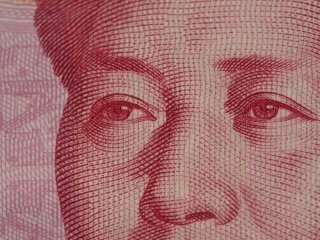The Dollars and Cents of China's Superpower Fortunes
Can Beijing's geopolitical rise overcome the "dollar trap"?
By treating the rural and urban populations of each of China’s provinces as separate nations, Hung concludes that China’s contribution to the reduction in global inequality is undeniable. This is because the rate of growth in the average income for all of these “nations” far exceeded the average growth rate in world income of 74.09 percent between 1980 and 2010. Even China’s poorest provinces experienced faster income growth than the world average: Guizhou and Yunnan, for example, experienced growth rates of 1,070 percent and 1,052 percent, respectively. Hung argues that China will continue to contribute towards the reduction in global inequality until its average income surpasses the world average; afterwards, it will begin to contribute towards global inequality in net terms.
Unlike his treatment of the other common assumptions in the literature, Hung does not devote an entire chapter to China’s purported challenge to the neoliberal economic order. His argument that China is not challenging such a global free market system because it is one of its biggest beneficiaries is more or less subsumed in the other chapters of the book. A more extensive and focused discussion on this topic would have been welcome. Moreover, as can be said about other arguments he makes in the book, Hung does not mention the possibility for China to simply undermine the U.S.-led economic and political order instead of endeavoring to replace it altogether. For example, China’s recent establishment of the Asian Infrastructure Investment Bank, the BRICS Bank, as well as the latter’s IMF-like Contingency Reserve Arrangement, will by no means upend the Bretton Woods institutions, but it could weaken their influence.
The China Boom reaches many sober conclusions about the ongoing impact of China’s economic boom on the world economy and geopolitics. The book’s main weakness, however, is the lack of a consistent line of argument that comprehensively explains why China will not rule the world (the volume’s subtitle). Indeed, the book almost reads as two separate exposés: the first three chapters discuss the evolution of China’s embrace of capitalism, beginning in the late Qing dynasty through the current era (the contents of which were beyond the scope of this book review), whereas the final three chapters analyze the abovementioned (mis)conceptions. Moreover, Hung does not present a unifying thesis in this latter half of the book that weaves together his individual points about the constrained nature of China’s future trajectory. Readers nonetheless will find value in the book’s well-researched sub-arguments and the wealth of graphs and tables that help to illustrate Hung’s assertions.
Kyle Churchman is a resident junior fellow at the Center for the National Interest. An earlier version of this article appeared on the Web site of the National Bureau of Asian Research.
Image: Flickr/David Dennis

